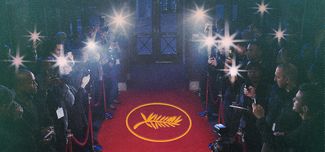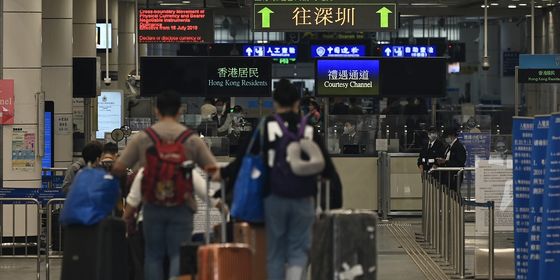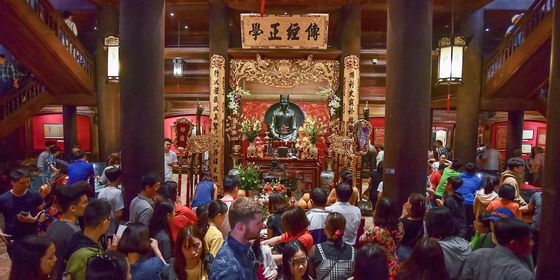Korea’s only Chinatown gets the theme park treatment
A Chinese traveler’s review of Chinatown in Incheon, South Korea, on travel website Mafengwo reads, “In Chinatown, you will see a lot of locals and [non-Chinese] foreigners.”
It’s terse, but accurate.
“Before there was a Chinatown, this was the special area where Chinese people lived.” This was the logic defying explanation that Gok Myeonshin, owner of a Chinese imports shop, gave for the neighborhood. Born in Korea, to Chinese parents who immigrated to Incheon, Gok was just the second Chinese-speaker I’d come across after 30 minutes in the area. Still, these were better odds than I’d been given by the Turkish ice cream seller nearby, who believed there’d be nobody at all. Certainly, I found no Chinese-speakers that day at the Chinese bun shop behind him, the Korean-Chinese Cultural Center, and the Jajangmyeon Museum, which commemorates black soybean-sauce noodles from China.
Contradictions piled on as Gok continued to talk. “What was here before? There were hometown associations, everything the Chinese needed to live, it was a ‘China village’; I went to school around the corner.” Followed by, “I’ve been in Chinatown since it started, about 12 years ago,” which turned out to be how long ago she’d set up her shop. Though we conversed in Mandarin, she always said “Chinatown” in English, and you instinctively wanted to capitalize the words like a trademarked term or an exotic vacation spot: “China Town,” Korea’s official destination for rediscovering China.
If Incheon Chinatown felt artificial, and Gok’s timeline convoluted, there was good reason. While it’s not unusual for tourism and commodification to dominate any Chinatown in the world today, Incheon’s Chinatown was built with this exact purpose in mind: it is an official tourist zone designated by the Incheon government, built in the early 2000s to capitalize on booming trade relations between China and South Korea. The city raised 18 million USD from Chinese investors to create the cultural center, traditional signs, and lampposts. Buildings in the neighborhood, which was then rundown, were restored and equipped with historical Chinese facades. The provincial government of Shandong, China, contributed a Confucius statue and three traditional arched gates (pailou, or paeru), one of which is unfortunately rainbow-hued and -bulbed like a carnival ride. Like a theme park, you can beat a path from Chinatown to a restored Japantown, and end up someplace called Fairy Tale Village.
To be fair, Incheon Chinatown is not without historical foundations. The Korean tourism board’s official history of Chinatown starts in 1884, the year this neighborhood became a leased territory to China’s Qing Dynasty (1616 – 1911). In the decades that followed, migrants mostly from Shandong Province traded in Incheon’s port and worked at the docks and the restaurants to escape poverty at home. As literary critic Lee Chang-guy, a first-generation Chinese immigrant to Korea, has written, the growth of the early Chinese community in Korea was inversely related to the Korea’s own national strength. Having started under the semi-colonial relationship with the Qing, Korea’s Chinese population reached its peak in numbers and prosperity in the 1920s when Japan’s colonial government in Korea (1910 – 1945) allowed free trade by the Chinese as well as Western powers. At that time, the Chinese population in Incheon was estimated to be 10,000.
The Japanese later cracked down on Chinese silk and hemp imports. In 1950, the former Chinese concession was levelled by shelling when UN forces landed in Incheon. But it was during the military rule of Park Chung-hee in the 1960s and 70s, which many South Koreans credit with shaping the strong economic foundations of the country today, that the struggle between Chinese success and Korean national power came to a head. Legislation in 1961 prohibited foreigners from owning property in Korea; until 1998, the aftermath of the Asian Financial Crisis, foreigners could not own property except under a Korean name. Chinese immigrants also could not become permanent residents of Korea until 2002—those born and raised there still had to P renew visas every year.
According to Gok, many in her community had their businesses and other property confiscated in the Park era, including 4,000 square meters of land owned by her family. This was the catalyst for many to go to other countries or back to China—in this case mainly Taiwan, where families of early immigrants still had citizenship. “There was a lot of opposition to the Chinese—they thought we made a lot of money, but took it all to our own country,” Gok said. In 1984, the fabled Gonghwachun restaurant, where jajangmyeon was said to have been invented, closed due to financial difficulties and the building fell to ruin. An area resident, interviewed by The New York Times in 2007, described the former Chinese concession before its facelift as the “most impoverished area in Korea because all the Chinese had left.”
In the new millennium, with both countries’ economies soaring, the Chinese and their historical connections to Incheon are being courted again to enhance the international status of both countries. The inauguration of the modern Incheon Chinatown took place in tandem with the opening of the Incheon International Airport and the Incheon Free Economic Zone, part of the Korean government’s plan to create Northeast Asia’s premier business hub by attracting businesspeople and investors from worldwide. This included potential returnees to the former Chinese concession as well as new entrepreneurs who might see opportunity to set up China-themed businesses. On the Chinese side, institutions like the Korean-Chinese Cultural Center are another avenue for spreading Chinese language, culture, and soft power abroad.
“Destination Chinatown” is a story from our newest issue, “Climate Change”. To read the whole piece, become a subscriber and receive the full magazine. Alternatively, you can purchase the digital version from the iTunes Store












